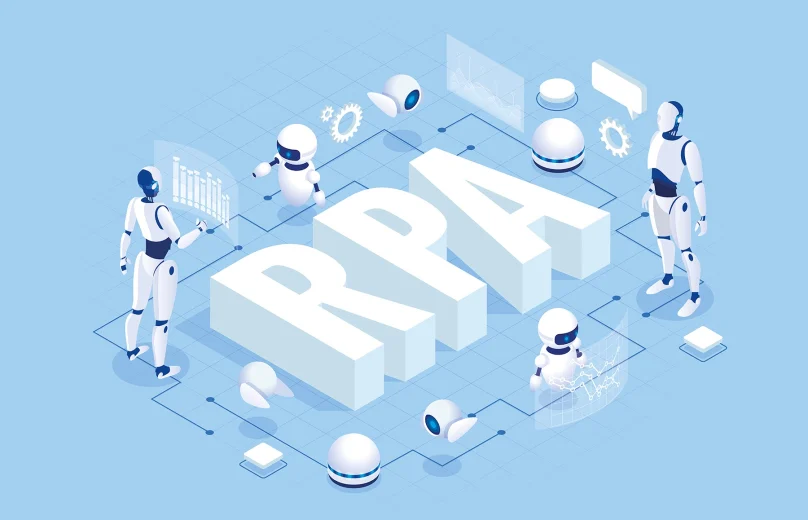
According to a study by Gartner, more than 75% of companies give importance to change management. With the developing technology, companies are always integrating changes in infrastructure and business management into their systems. Adapting to the changes made in this context ensures that the workflow is not disrupted. This process, called change management, is carried out much more smoothly and practically with RPA technology today.

In this article, we have compiled detailed information about the management of seamless change with RPA technology for you.
What is Change Management?
Change management is defined as an innovative approach that provides guidance on transforming workflows and infrastructures into a better system and how companies can keep up with the new orders created by today’s technology. People may have difficulties adapting to developing technology by nature. One of the easiest ways to do this is to get experienced professional support. The same is true for companies and sub-units of companies. It can take time for a company’s employees to adapt to innovation, which can cause workflow disruptions.
It is possible to prevent these and accelerate the adaptation process with professional support. Change management basically aims to increase the earnings rates of individuals and companies. An innovative and creative approach is very important in the realisation of this management, and technological tools are used.
RPA Use Cases in Change Management

In a change process where management is lacking, the probability of RPA technology making mistakes increases noticeably. With the support of a professional team using RPA technology, excellent change management emerges, and positive results are obtained in line with the wishes of individuals and companies. According to a study by the Shared Service and Outsourcing Network, 44% of the business processes run on average are dragged into this situation. We have compiled under subheadings how change management progresses with RPA technology.
1. Automating The Identification of Changes
The beginning of change management begins with the definition of the change to be made. RPA technology plays the most effective role in automation change identification. Change management creates an extremely efficient workflow with RPA technology in collecting data about companies and individuals and making evaluations. At the end of this workflow, the determination of what kind and which changes will be made with the data collected emerges in a very short time.
2. Automating the assessment of the risks
Analysis of risks in a change process plays a key role in preventing possible obstacles, eliminating setbacks, and implementing the change plan appropriately. With the change management support in RPA technology, these risks are easily analysed, and situations that will negatively affect the workflow are eliminated. Unlike humans, RPA technology provides a much more successful evaluation at a percentage rate. Therefore, using this technology instead of people in change management goes a long way in achieving the desired result.
3. Automating the creation of change tickets
Automation systems are the best tools for change management. Exchange tickets are generally created by specifying the classification and type of exchange to be made. These tickets suggest the changes you want to be made and play an important role in the action of the change process. RPA technology is one of the most applicable and effective methods in this management ticket creation and implementation process.
4. Automating the testing of changes
The fact that changes are tested cannot be ignored, and it is very important to fill the gaps in change management. Continuity is one of the most important issues in the changes applied to companies and businesses. This process needs to be well evaluated and managed. The gaps in the system should be checked, and, if necessary, these gaps should be filled. In addition, getting feedback from employees gives important information about how the workflow is progressing after the changes.
Change managers step in at the points that need to be corrected in line with this feedback, and arrangements are made by providing the necessary work plan. RPA technology provides a great success rate in all these change tests together with change management. The applied tests or the results of the tests are carried out in a healthier way with this technology. As a result of this data collected later, a more regular business plan is obtained in the change management to be made in the future, and errors are eliminated.
5. Automating the implementation of changes
The change process has a flow of operation, and as a result of these processes, implementation problems may arise as well as some adaptation problems. There are multiple steps to eliminate these problems. The problems that occur in the implementation of these changes disappear after a long process without RPA technology. However, if change management is carried out by planning with RPA technology, all implementation errors are analysed the first time. In order not to encounter such problems afterwards, the change management system is optimised, and the identified problem is eliminated.
Integrate with Autom Mate
Autom Mate, which has come a long way in automation, RPA, and hyperautomation technology, is a very effective solution in change management as well as in all workflows. Autom Mate, which offers seamless process management thanks to artificial intelligence- supported automation technology, allows you to always evaluate and integrate change management in the best way with its many tools, such as hyper-automation. Start exploring Autom Mate’s world full of automation technology right away.

 Unlock the Power of Automation: Leverage Robotics Process Automation for Efficient Change Management
Unlock the Power of Automation: Leverage Robotics Process Automation for Efficient Change Management